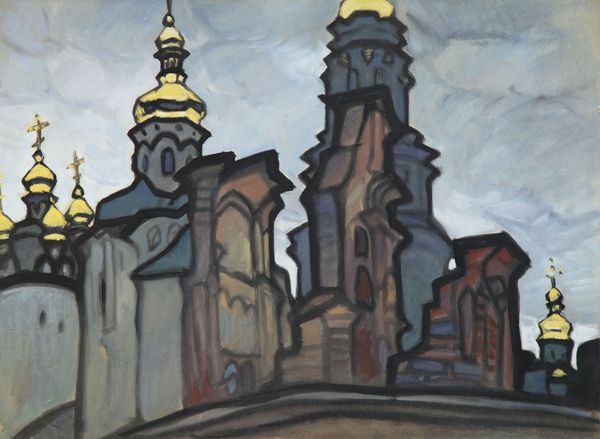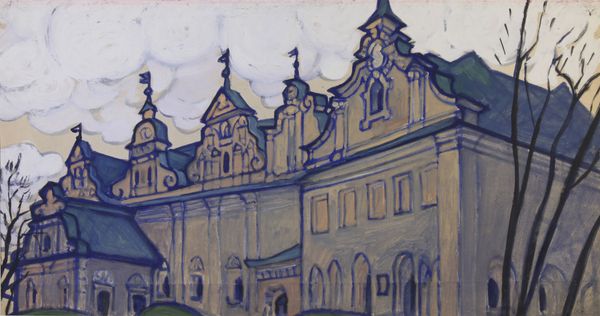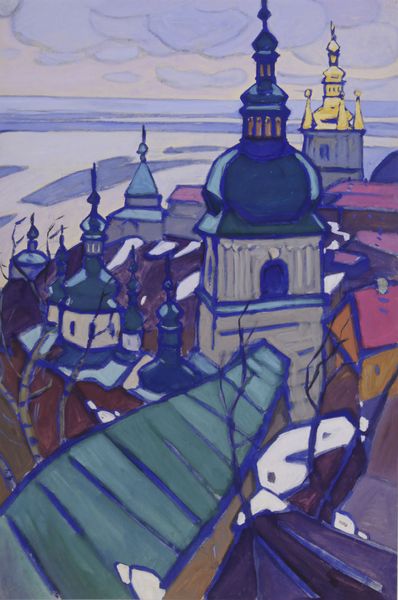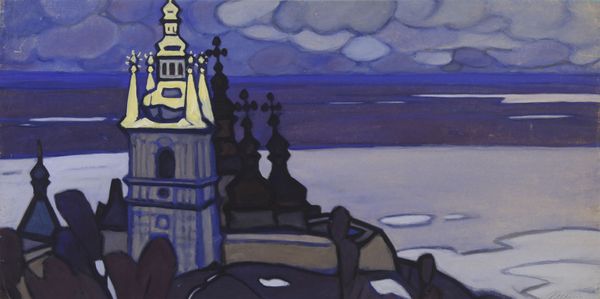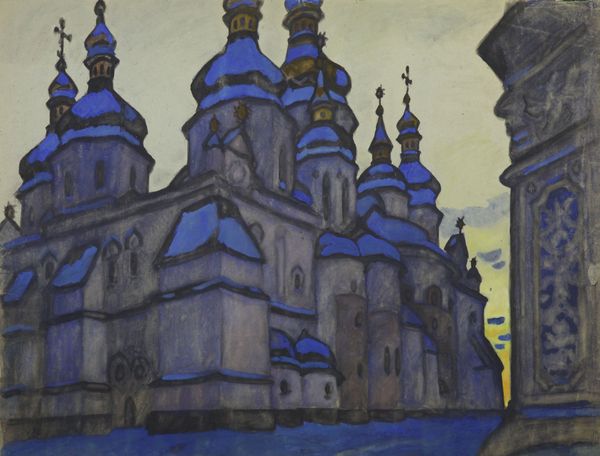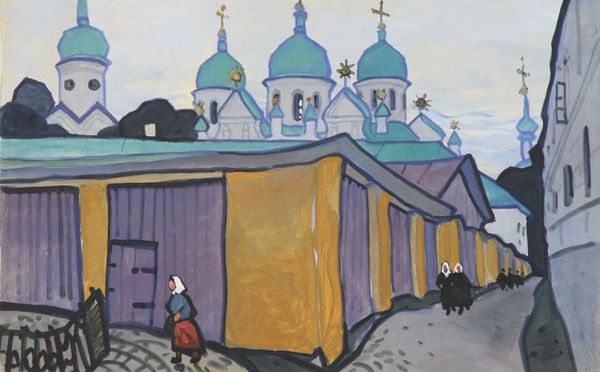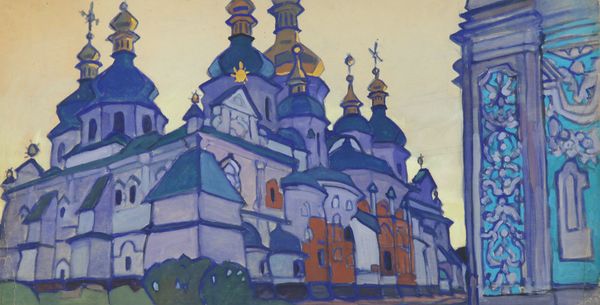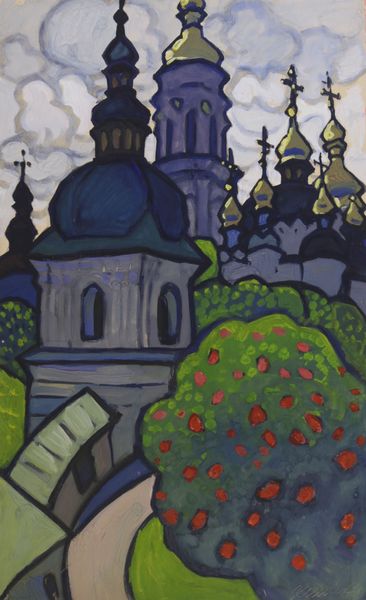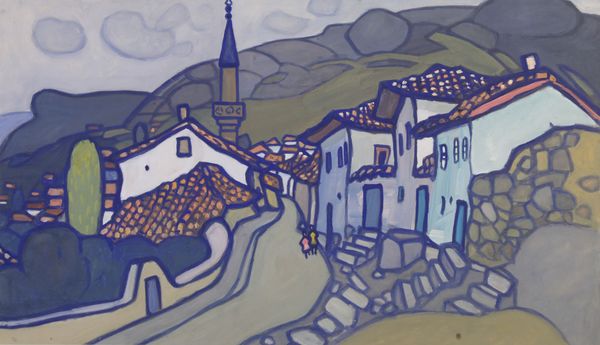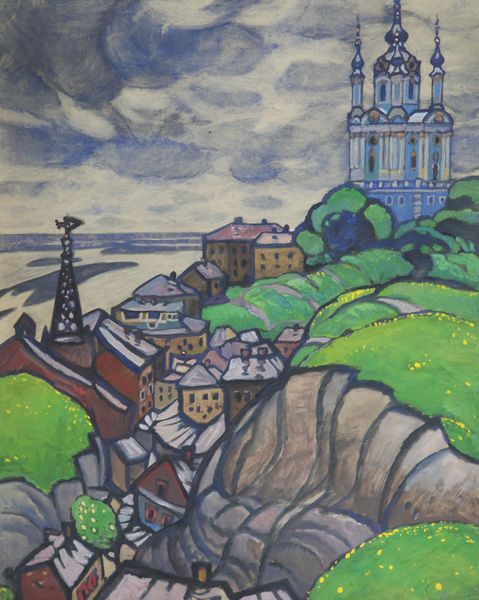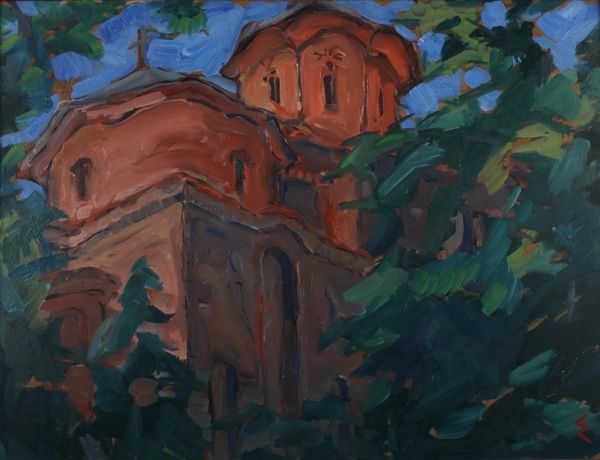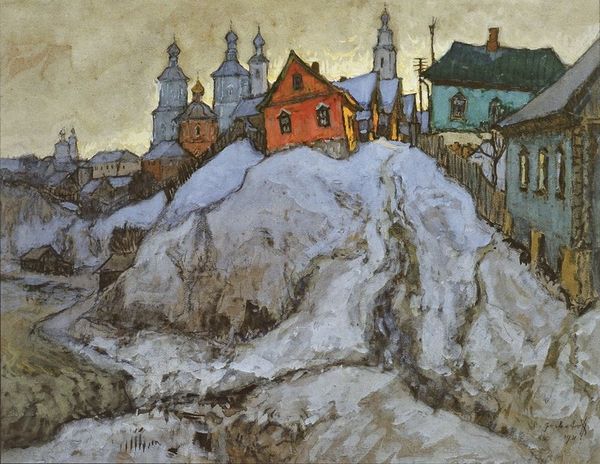
Dimensions: 24 x 99 cm
Copyright: Yuriy Khymych,Fair Use
Curator: Here we have Yuriy Khymych's "Panorama of Vydubychi Monastery," painted in 1972. It’s an oil-on-canvas cityscape rendered in an Expressionist style. Editor: My first impression is… melancholy. The color palette is muted, almost ashen, despite depicting a presumably significant religious site. Curator: Indeed. Considering the time of its creation, during the height of Soviet power in Ukraine, one could argue that the subdued palette reflects the constrained artistic and religious expression of the era. The state's control certainly influenced the public's access to religious sites and artistic representation of them. Editor: The painting technique, the way he layers the oil paint to create a rough, textured surface also speaks to me. You can almost feel the roughness of the buildings, the rawness of the bare winter branches. It hints at a certain austerity, or even… resistance. What kind of materiality do we know Khymich worked with beyond just this particular oil work? Curator: Khymych's architectural paintings are recognized within the context of a broader movement resisting Soviet Realism through more nuanced and expressive landscape and cityscape portrayals. There's certainly a socio-political element here. But your interpretation, especially the emphasis on resistance through materiality, prompts me to reconsider how this artwork may have challenged or at least offered an alternative vision to the dominant aesthetic of its time. Editor: The bare trees dominating the foreground – they look less like natural elements and more like bars on a cage. Their skeletal structure against the backdrop of the monastery suggests a confinement, maybe not physical, but perhaps spiritual or cultural. You mention the architecture resisting some kind of realism. Was it just architectural paintings? Were these considered radical by the establishment? Curator: To directly challenge Soviet artistic doctrines was risky; instead, subtle expressive divergences could offer artists a degree of insulation. His architectural paintings provided social commentary. But to say outright defiance? It would be an oversimplification. Editor: I agree. But perhaps through the very act of creation, Khymych offered viewers a space to reflect, to subtly resist the dominant ideology. It all exists, subtly, in the materiality of this "Panorama." Curator: That’s a good observation. It underlines the multi-layered interpretation this landscape warrants. Editor: Absolutely. Thank you for pointing out what was happening when this landscape was created.
Comments
No comments
Be the first to comment and join the conversation on the ultimate creative platform.
